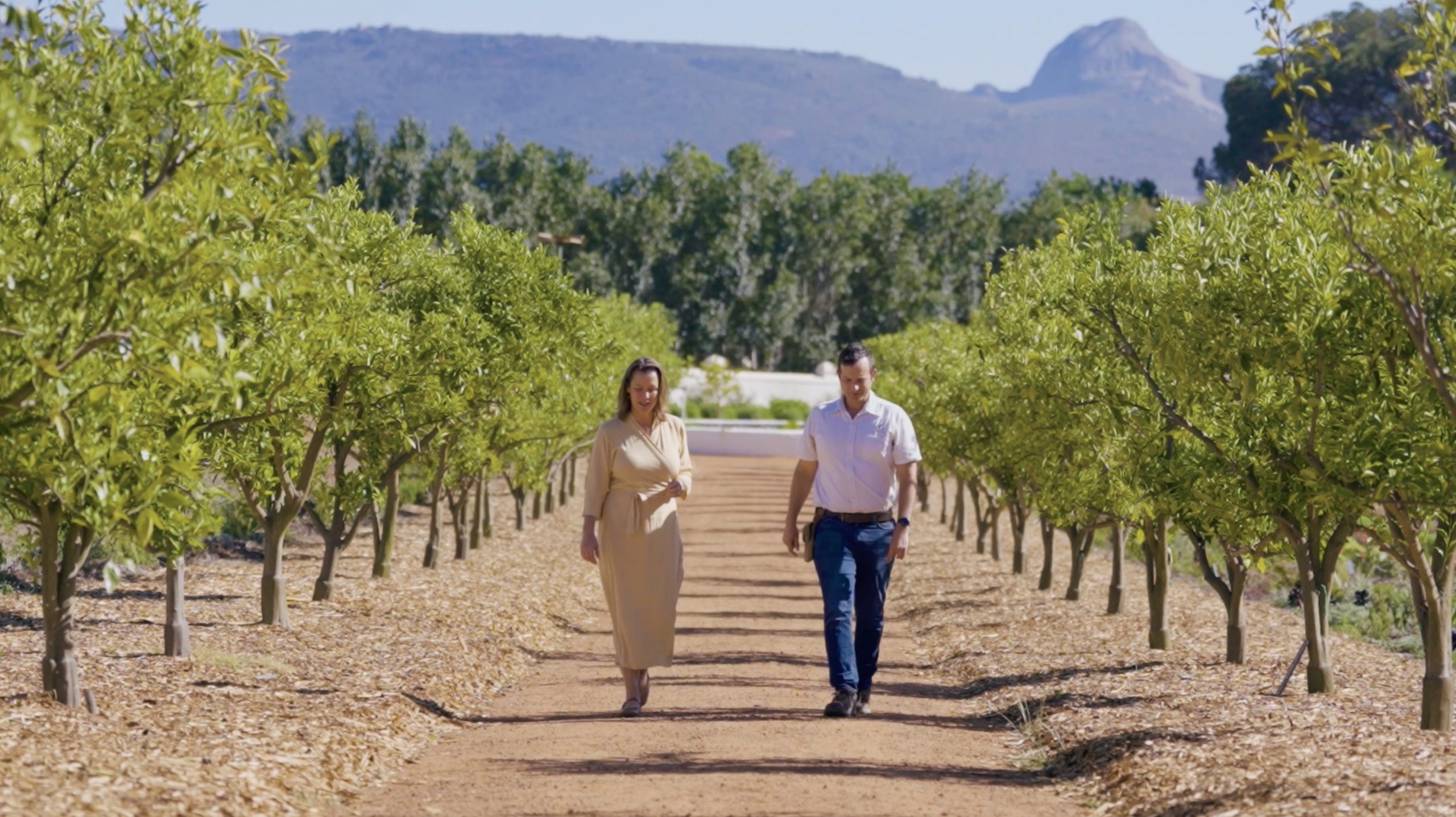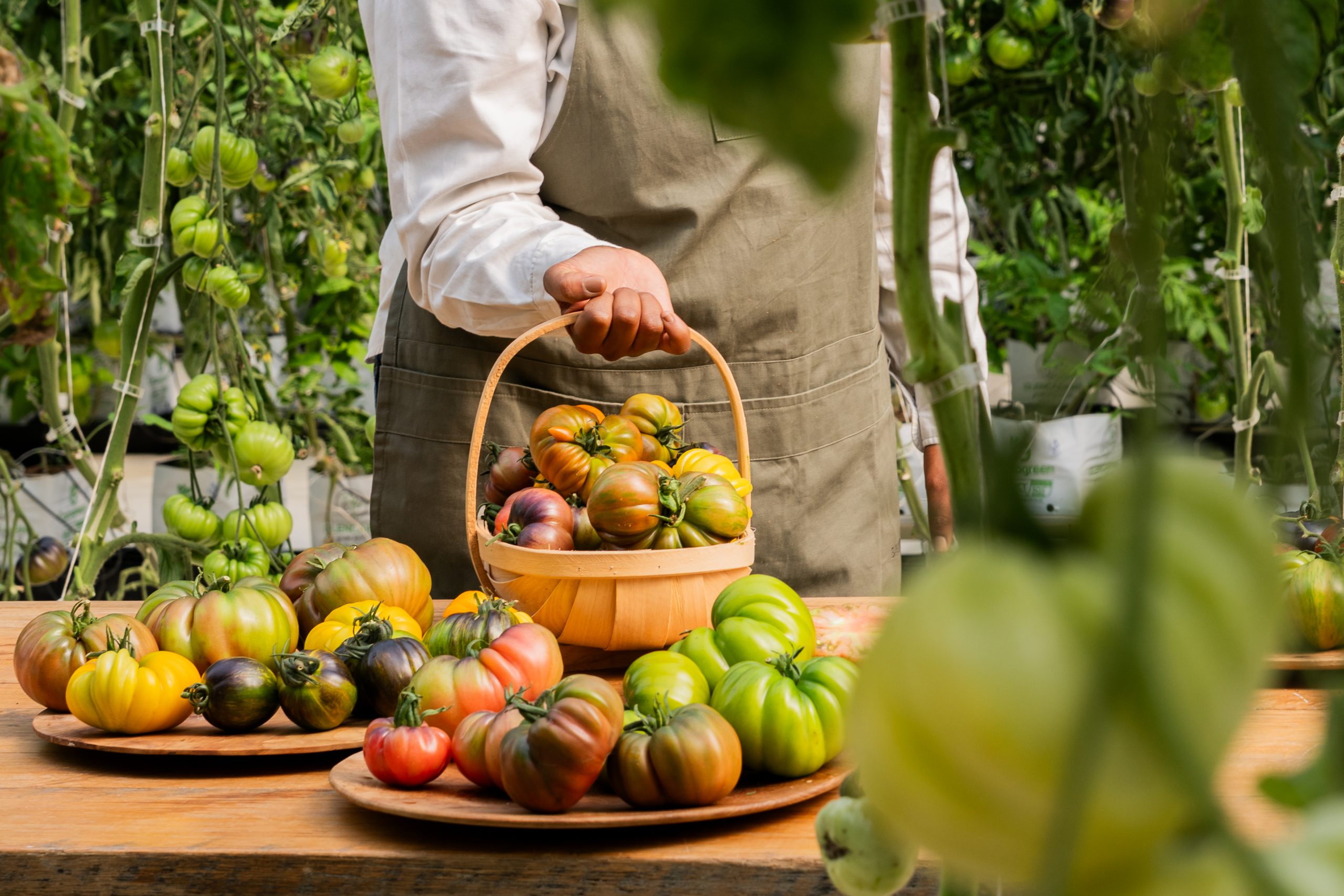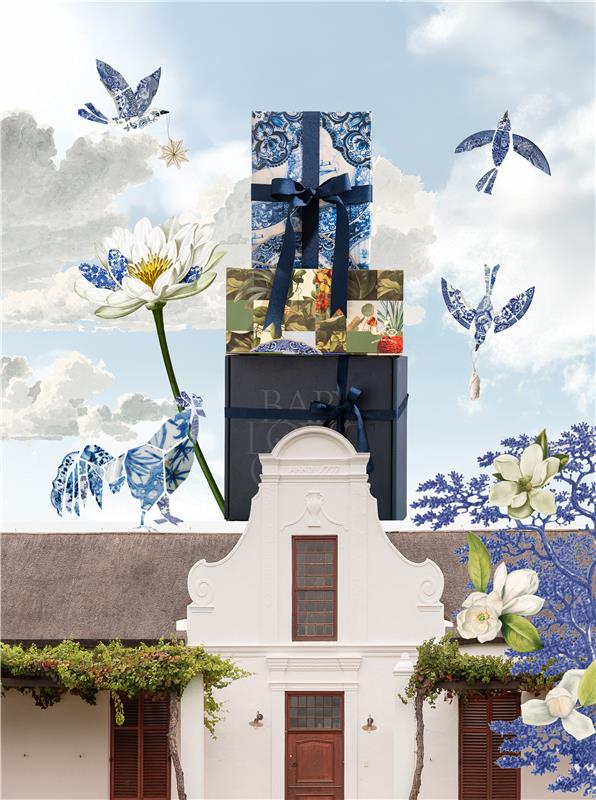The Tree Sprite
April 11th, 2024Behind Babylonstoren #6: Oom Anton Roux
Sprite: from the Old French esprit, or “spirit”, and the Latin root spiritus. An older alternate spelling (now obsolete) was spright, which led to the adjective sprightly, “animated or lively”. Definitions of sprite: a being, human in form, playful and having magical powers.
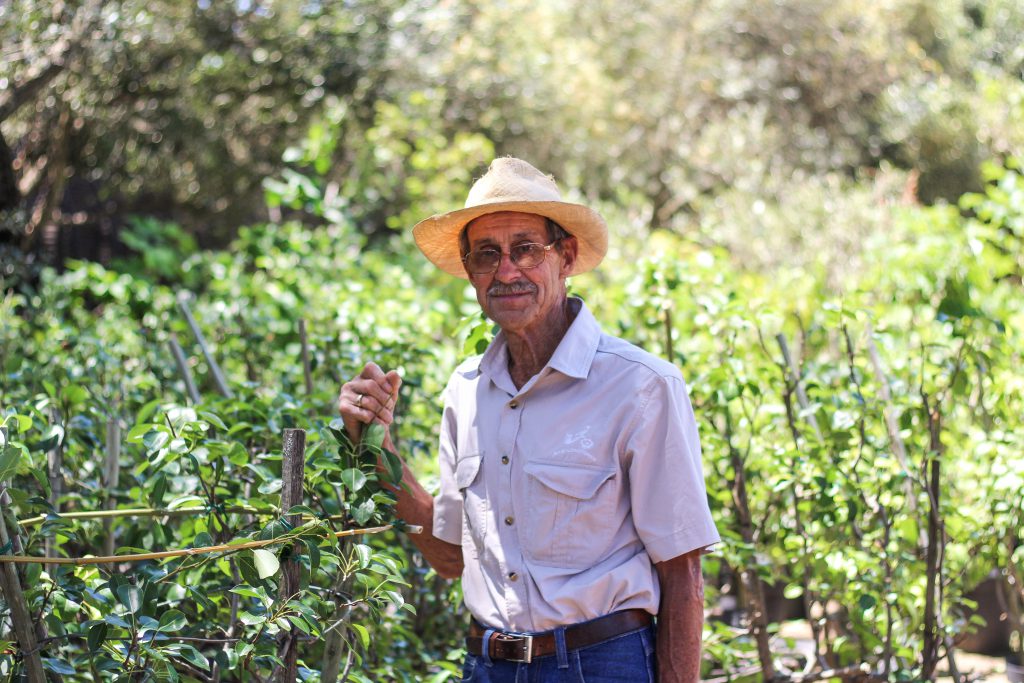
In 2009, at the age of 70 when most people are confirmed retirees, fruit growing specialist and master pruner Anton Roux embarked on a new chapter in his career – that of garden consultant to a Boland farm with aspirations of establishing a formal garden inspired by medieval monastic gardens, featuring an abundance of trained plants.
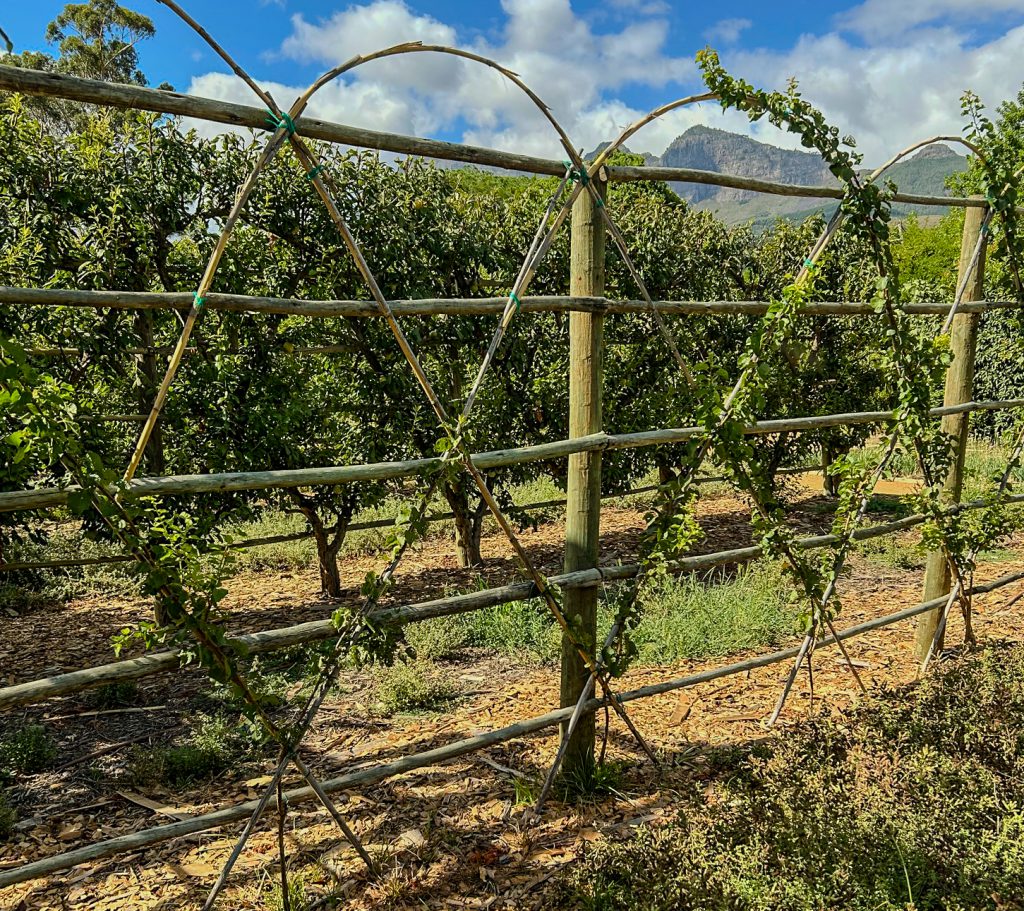
It was the year before Babylonstoren opened its gates to the first guests. Anton and fellow founding gardener, Gundula Deutschländer, started by preparing the soil in what resembled a large, open clearing. “It’s unimaginable when you look at it now,” says Anton of the garden. “Back then it was all flat, there was almost nothing.”
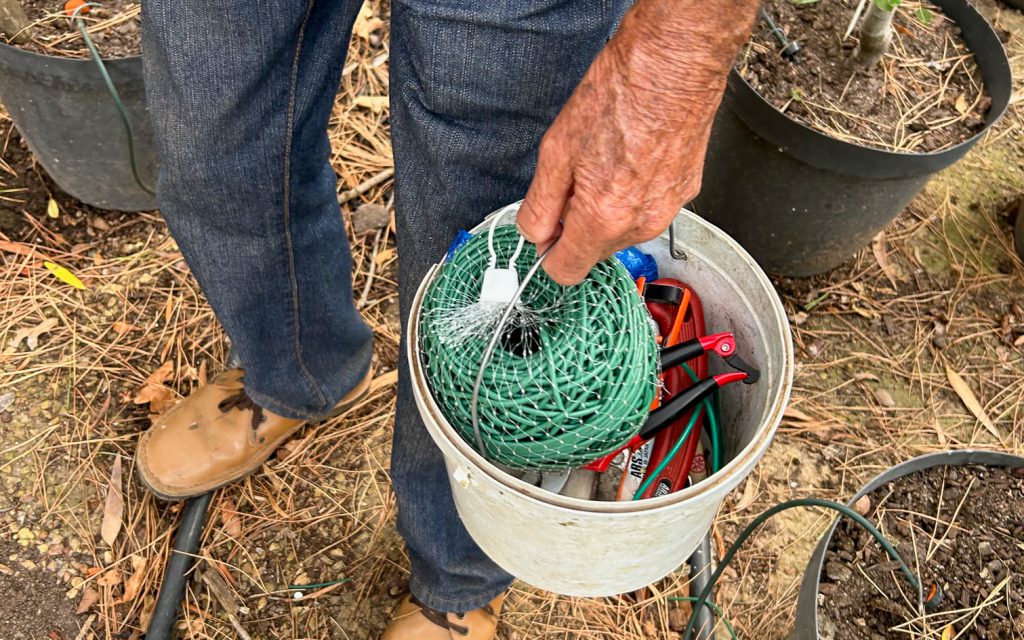
Oom Anton, as he is affectionately known to all on the farm, is heading down one of the garden’s main arteries at a brisk pace. At almost 85 he walks 12–15 km per day, and never without his bucket of gardening tools in hand, so he can clip back or tie down whatever needs redirection. His knowledge of fruit trees is formidable. Since starting in the fruit industry in 1958, he has established himself as a master pruner and grafter of fruit trees. His expertise with grafting has enabled him to revive old-fashioned varieties that were on the brink of extinction.
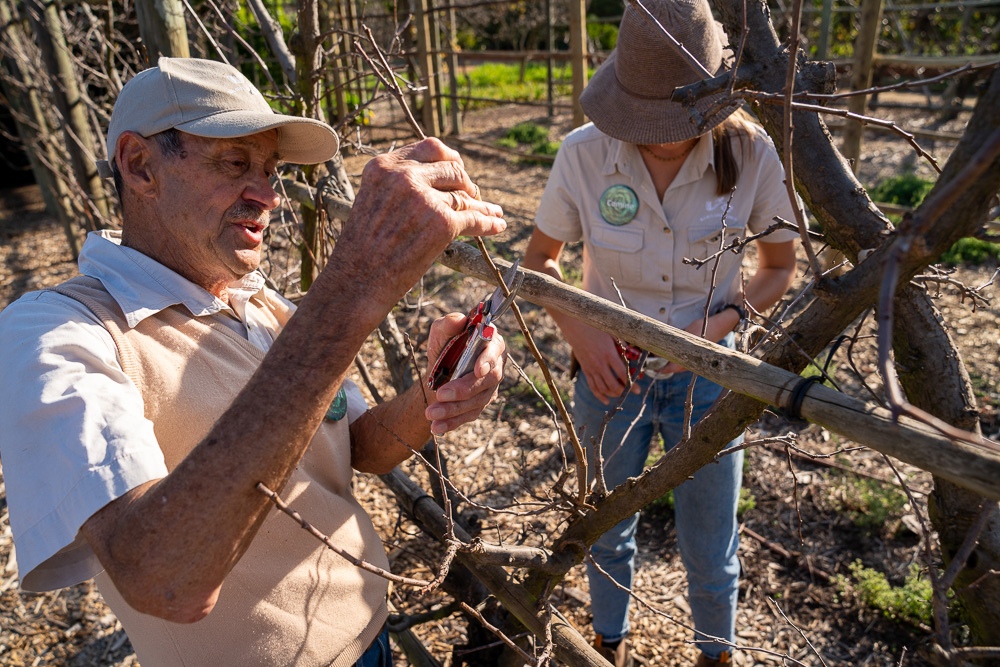
“As a consultant I’ve visited many farms in search of old varieties. Once I’ve identified a variety that I’d like to grow, I gather scions and cuttings to graft onto a rootstock in the nursery,” he says. Many older varieties fell out of favour due to their susceptibility to certain pests, in the days before sprays were developed to control diseases. Now Oom Anton can revive a heritage variety like the White Winter Pearmain – according to him the most delicious yellow apple with a distinct pineapple flavour – that used to suffer from a disease that causes a calcium deficit. “I’m able to bring it back because we now have the means to prevent the disease,” he says. “It’s not a revival, it’s conservation. It is an act of preservation.”
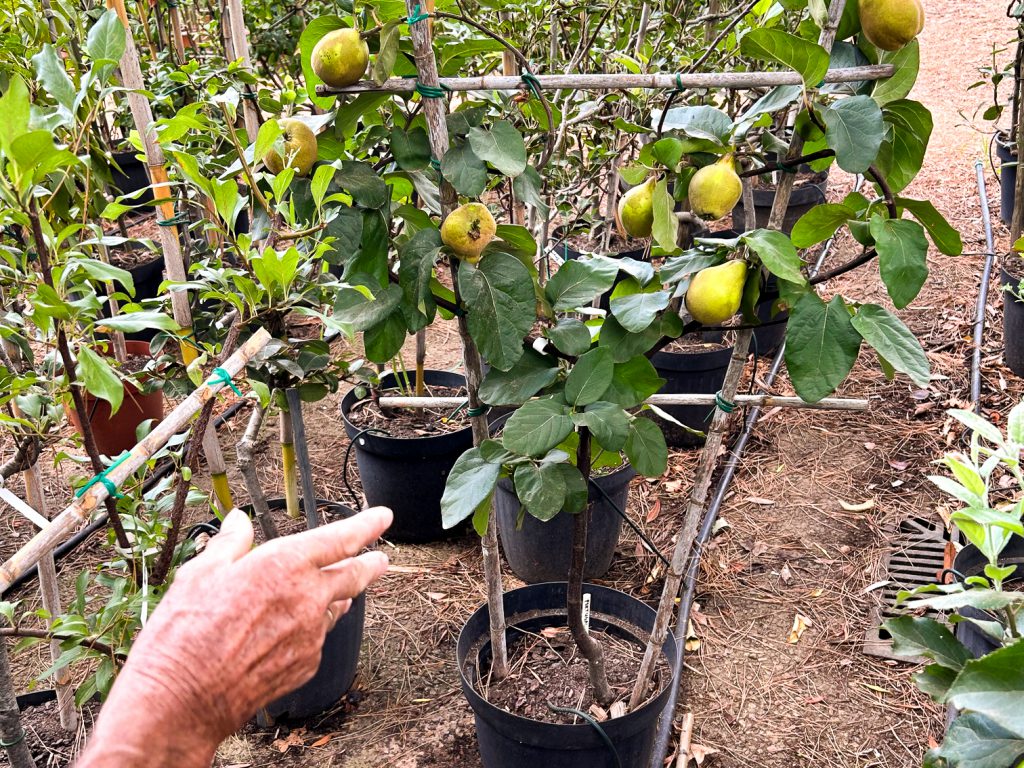
Oom Anton is also a master of traditional espalier systems, dwarf tree systems in pots, and arbour art. Working with young branches, he creates living, fruit-bearing sculptures. Whereas espalier entails training trees along systemic, established support lines in a pattern, arbour art involves freestanding or trellised trees that are grown in the shape of an object, like a heart, a chair or a snake. Much like bonsais, it is a training process that takes years. “Visitors are always surprised when the dwarf trees* produce normal-size fruit. It’s the most precious sight; to see big, red apples on a beautifully shaped tree,” says Oom Anton.
He cautions that not all fruit trees can be bent into shapes. “You must use a supple wood, like quince, pear or apple. Citrus wood is too hard to espalier and not at all suited to shaping into forms. Peach, plum and apricot trees generally don’t live beyond 15–25 years before they get bacterial cancer and need to be replaced. If you’re going to make the effort to create arbour art, then do it with a tree that will live for at least 50 years,” he explains.
As we walk, he points out a row of apricot trees grown in the classic heart-diamond-cross espalier structure that he planted and trained himself. He is at Babylonstoren every Wednesday and Thursday, when he does the rounds with one or more of his students, to trim and tweak trees into shape and impart his knowledge to the next generation of master pruners. “He still does all the pruning. He climbs to the top of the ladder and prunes the trees himself. It’s quite incredible,” says Alex Bosman, head of gardens at Babylonstoren.
Oom Anton has authored many articles during his career but on the eve of his 85th birthday, he is extremely excited about publishing his first book. “Prune like a Pro is about everything I’ve done at Babylonstoren in the last 15 years,” he says. “I’ve poured my heart and soul into this garden and can honestly say that it is the most beautiful garden I’ve ever seen.”
We arrive at his pièce de résistance, the first tree he ever planted at Babylonstoren, and a fantastic example of his arbour art. A medlar apple tree was planted as a single main stem before four quince trees were planted around it. In the winter of 2011, the tips of the quince trees were grafted onto the medlar, and the five plants combined into one during the following summer. In summer of 2014, when the four legs were strong enough to carry the weight of the medlar, Anton took the brave step of removing the original main stem just below the grafts, leaving the medlar forever supported by four quince trees. Despite being grafted onto four quince trees, the medlar remains a medlar and will bear medlar fruit. In every other respect this tree is spectacularly unusual.
“Our motto has always been to grow unusual plants, whether old fashioned or out of the ordinary, it must be something people would want to see. The shape must tickle the imagination. Why grow everyday garden varieties? People will not travel to see the ordinary,” he exclaims. Two English ladies, identical twins from Dorset in the UK, wander past as Oom Anton is describing this feat of arbour manipulation. They are instantly intrigued, and he responds by hopping over the low fence to share with them the making of the medlar tree in English.
He seamlessly segues into a masterclass on the art of grafting, explaining the different families of fruit trees, factors that determine compatibility between cultivars, bark colour – all to the rapt attention of the twins. They encourage him to share his life lessons, eagerly anticipating the secret to his youthfulness, agility and sprightly demeanour.
“You must keep moving,” says Oom Anton. “The day you sit and do nothing, it’s goodbye. And your mind must always be refreshed. Eat fruit. All my life, I’ve eaten one fruit a day after lunch. You can eat anything and drink anything but do so in moderation. That is my secret in life,” he concludes. Perhaps not the quick fix the sisters were hoping for, but Oom Anton is robust proof that it’s the right answer for a long, productive life. Undoubtedly, the devotion bestowed on his beloved trees is reciprocated and this mutual affection has not gone unnoticed.
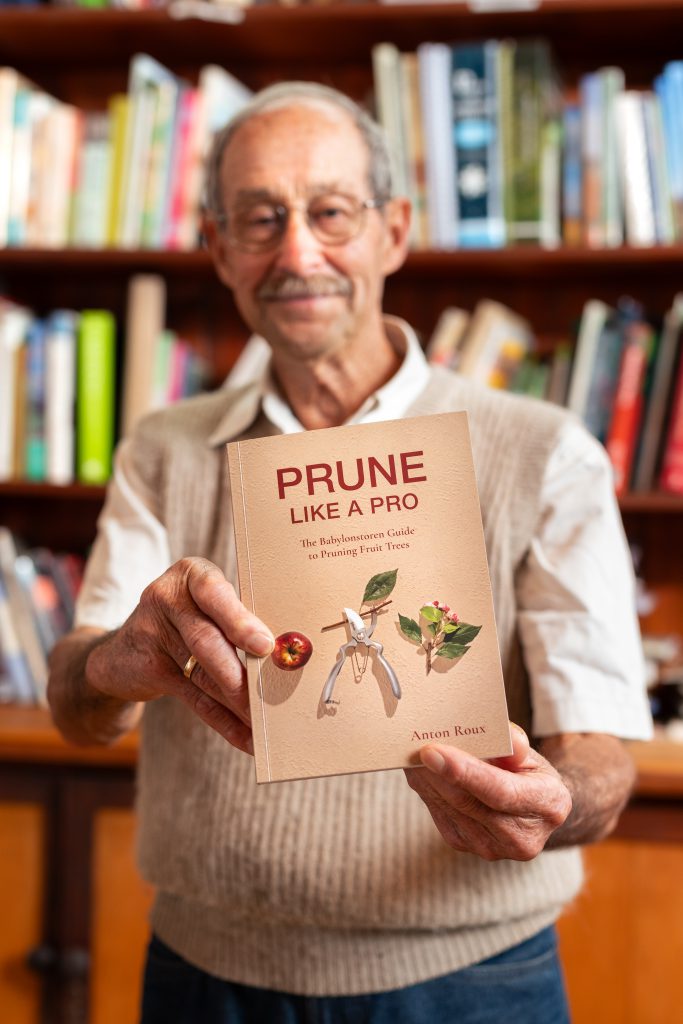
“I watched Oom Anton pruning some guava trees this week. They are more or less of a similar age to him; in their eighties. He was explaining how he was pruning them to ensure they grow happily for a few hundred years. I just realised how easily the analogy of trimming this stump, removing that wayward twig and coaxing this young branch to find the light, could apply to Anton himself. He is as close to being like those guava trees as anyone I’ve ever met. He has put so much love and vigour in his relationships with fruit trees that I wouldn’t be surprised if the birds have already dedicated an ode to Oom Anton,” says Gundula Deutschländer, who has gardened with Oom Anton since day one at Babylonstoren.
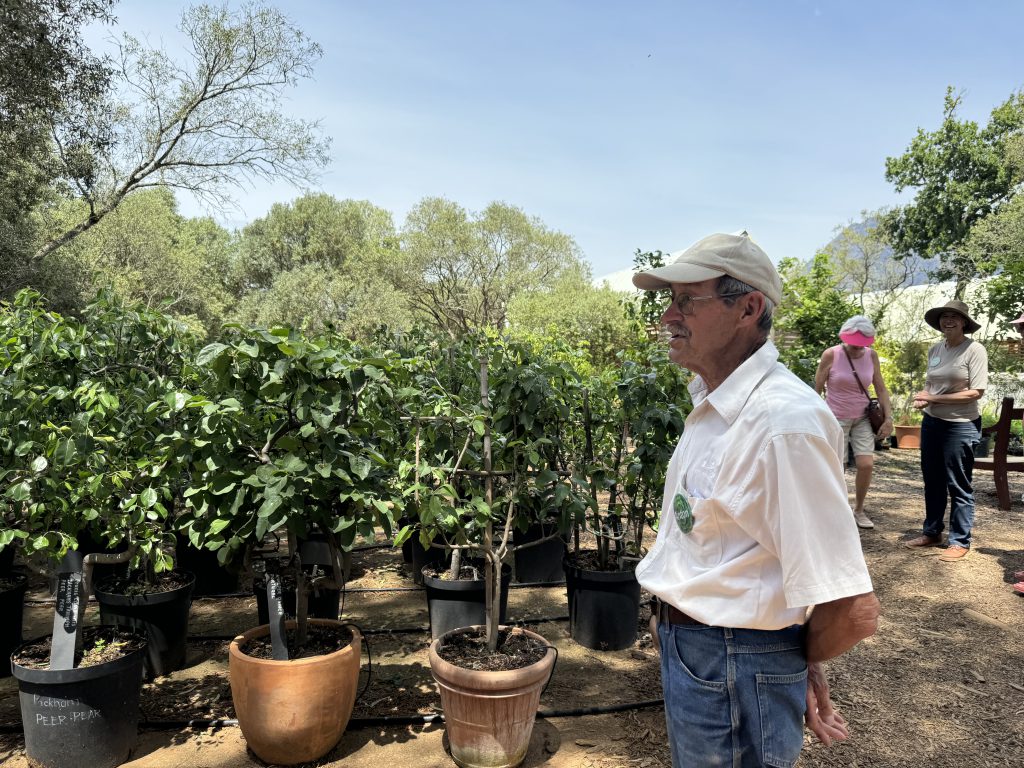
*Oom Anton’s potted dwarf trees are occasionally available for sale from the Farm Shop at Babylonstoren.
